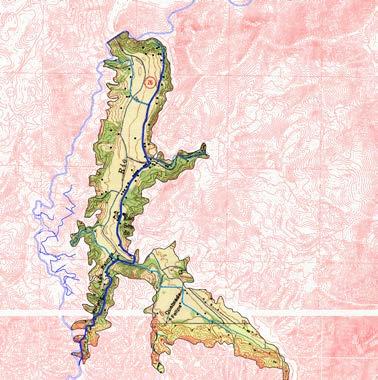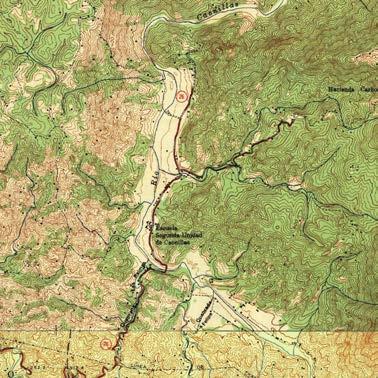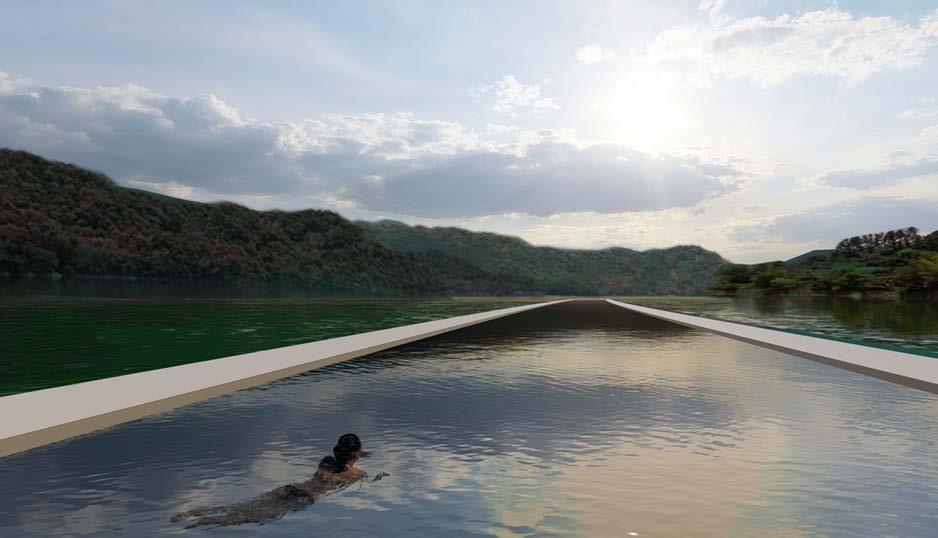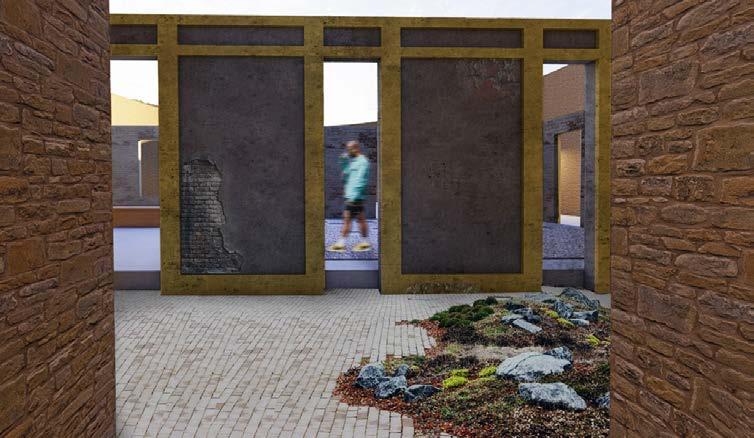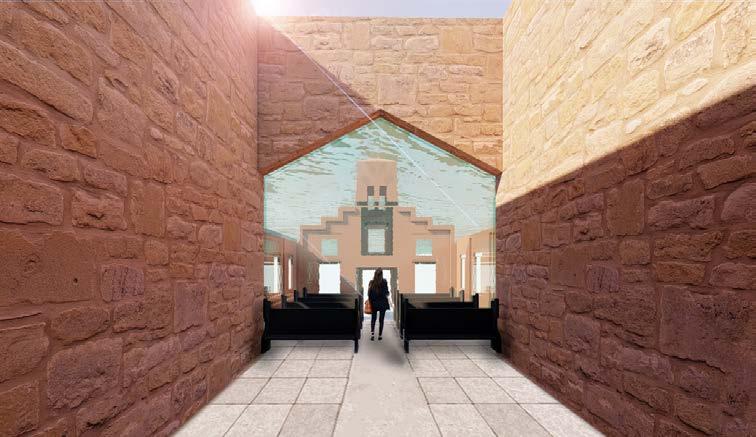
1 minute read
Anachronisms
MArch year 3
Prof Thomas Leeser
Advertisement
Project Partner - Carlos Acosta
What is history but the stories we tell ourselves based on remnants of another time? In the site of the small town flooded during the construction of Lake Caonillas, the project seeks to explore the relationship between newness, culture and obsolescence in architecture, bluring the line between historic preservation and creation. The path traces over the the roads of the old town to reveal the structures drowned under the lake.
Recuerda: "Existía un poblado y habían dos haciendas, una del Sr. Alonso y la otra de Don Pelayo Ruiz, ellos eran dueños de la finca donde ahora mismo está el lago. Además había una iglesia, conocida como Capilla Sagrado Corazón, la cual fue construida para el año 1936, por el padre Gregorio. Gregorio era el párroco de la iglesia del pueblo. La construcción de la iglesia costó entre unos doce a trece mil dólares, lo recuerdo porque mi querido padre trabajó en esa construcción. También tengo que contar que allí me casé yo."
- Memorias de la señora Lydia Morales González
“Habían colmados y cafetines, caminos en piedra y tierra, una iglesia, hacendados y casas de madera y zinc, una plaza, una pequeña escuela, un hospitalillo y un cuartel de policía.”
“There were grocery stores and coffee shops, paths made of stone and dirt, farms and houses made of wood and zinc, a plaza, a small school, a hospital and a police station.”
-Las memorias de Luz E. Maldonado Santiago en torno a la construcción del Lago Caonillas the church the police station
Hundreds of structures, including houses, schools, and even a church were flooded during the construction of Lake Caonillas. This set of maps documents where these structures are under the surface of lake.

